I've done this. Not for power conversion, but for PFNs. For single layer solenoids the easiest thing to do is get PVC pipe from the local building store. It comes in a variety of diameters, cut to length. Wrap magnet wire uniformly around and along the pipe. I see Andy gave you a formula. Here is another if you like metric.
L = \$\frac{9.8425 \text{ 10}^\text{-6} \text{ Dia}^2 \text{nt}^2}{4.5
\text{ Dia}+10 \text{ Len}}\$
where:
- Dia = diameter (m)
- nt = number of turns
- Len = length (m)
- L = inductance in Henries
Edit:
About winding. We used 14AWG magnet wire, wrapped on a ~8in by ~3ft PVC pipe. I no longer remember how much inductance this was, but it was milli-henries. Let's see, using the equation: it would have been for about 580 turns (14AWG is 14.9 tpi), and 375 meters of wire, would have been about 14mH.
As in Connor Wolf's comment, we drilled 2 holes (about 1/2 in apart) at each end of the pipe. The holes were chamfered to relax the bend radius, and not stress the wire there. To start at an end, put the wire through a hole away from the edge of the pipe, and back out the second hole nearer the edge. That fixed the wire for the start. Then just wind around the pipe keeping the new winding next to the previous, and keeping tension on the wire. Keep things a little tight as you go. The wire will form to the shape of the pipe. After winding to the other end of the pipe, cut the wire and thread it through the remaining two holes like at the start. We also placed a couple of strips of double sided tape along the length of the pipe, to help stabilize the wire while winding, but I don't think that was necessary.
It took three people to do this, kind of ad hoc. Two managed the pipe rotation and one to manage the wire and keep things aligned and tight enough. After the wire was in place it was very stable and didn't move, no varnish was needed.
We built some smaller inductors first for practice, like 4in diameter by 1ft length, using the same technique.
Edit: A couple of additional thoughts.
We didn't have easy access to a lathe. If you do, it could turn this from a tedious 3 person operation into a not so bad 1 person task. The lathe could be used to manage the pipe (spooler). Also, you could prep the pipe surface. A helical groove could be cut (threading the pipe) to give a channel to lay the wire into. Not a machinist, but based on experience having plastic milled, if you did thread the pipe you would probably want to:
- use a sharp tool.
- turn slowly to keep the PVC from getting hot.
- control humidity to keep the static at bay.
Googling PVC turning yields this.

